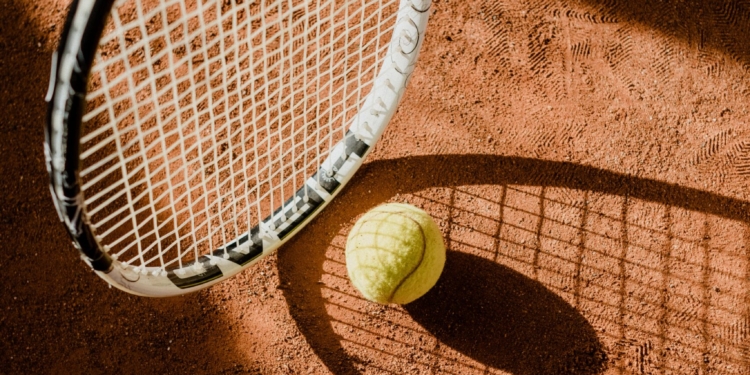How to Choose the Perfect Tennis Racket: A Comprehensive Guide
Selecting the right tennis racket is a crucial decision for any player, whether you’re a beginner exploring the game or an advanced player looking to refine your gear. The market is flooded with options, making the decision overwhelming. This guide aims to break down the key factors and provide a step-by-step approach to help you make an informed choice and find the ideal tennis racket for your game.
Understanding Tennis Racket Specifications
Before delving into the selection process, it’s essential to grasp the specifications that significantly impact a racket’s performance. These include:
-
Head Size:
- Measured in square inches (in²) or square centimeters (cm²).
- Larger head sizes offer more power and forgiveness.
- Smaller head sizes provide increased control.
-
String Pattern:
- Open patterns (e.g., 16×19) offer more spin and power.
- Closed patterns (e.g., 18×20) provide enhanced control.

-
Weight:
- Heavier rackets offer more power and stability.
- Lighter rackets offer increased maneuverability and control.
-
Balance:
- Head-heavy rackets provide more power.
- Head-light rackets offer enhanced control.
- Neutral balancing points contribute to a balanced feel.
-
Grip Size:
- The circumference of the handle is crucial for comfort and injury prevention. grip size and type
Choosing the Right Tennis Racket: A Step-by-Step Guide
1. Determine Your Skill Level:
- Beginners: Opt for a larger head size, open string pattern, and lighter weight for improved control and power.
- Intermediate/Advanced: Base your choice on personal preferences aligned with your playing style.
2. Consider Your Playing Style:
- Baseline Players: Larger head size and open string pattern for power and spin. tennis racket transitions
- Serve-and-Volley Players: Smaller head size and closed string pattern for increased control.
3. Test Different Rackets:
- Utilize demo programs offered by tennis stores to experience various rackets on the court.
- Testing provides insights into the feel and performance, aiding in an informed decision.

4. Consider Your Budget:
- Rackets vary widely in price, but expensive doesn’t always mean better.
- Choose a racket that aligns with your budget and personal preferences. prevent racket slipping
Top Tennis Rackets on the Market
Based on skill level and playing style:
Beginner/Intermediate:
- Babolat Pure Strike 3rd Gen
- Head Speed MP
- Babolat Pure Aero. explore racket pricing
Intermediate/Advanced:
- Wilson Pro Staff 97 v13
- Head Gravity Pro 2021
- Yonex EZONE 98
Conclusion
While the process of choosing a tennis racket might seem daunting, understanding the specifications and following a systematic approach can simplify the decision-making. Your skill level, playing style, and personal preferences should guide your choice. Remember to test different rackets, consider your budget, and prioritize comfort to enhance your overall tennis experience. Whether you’re a beginner aiming to improve or an advanced player fine-tuning your game, the right racket is a vital companion on your tennis journey. Sources: How to Choose a Tennis Racket
FAQs
Q. What factors should I consider when choosing a tennis racket?
A. Several factors play a crucial role in selecting the right tennis racket:
- Skill Level: Your skill level determines the level of control and power you need.
- Playing Style: Whether aggressive or defensive, your playing style influences racket specifications.
- Grip Size: Choose a comfortable grip size for a secure hold and injury prevention.
- Racket Weight: The weight affects maneuverability and power.
- Head Size: Head size influences the sweet spot and forgiveness.
Q. What is the significance of grip size in choosing a tennis racket?
A. Grip size is vital for comfort and a secure hold. Incorrect grip size can lead to discomfort, reduced control, and potential injuries. Measure the distance from your palm’s crease to the tip of your ring finger to determine the right grip size, which typically ranges from 4 to 4 5/8 inches.
Q. Should I choose a lightweight or heavyweight tennis racket?
A. The choice between a lightweight or heavyweight racket depends on your playing style and physical capabilities. Lightweight rackets are ideal for maneuverability, making them suitable for beginners or finesse players. Heavier rackets provide more power and stability, benefiting players with a stronger swing or those seeking power in their shots.
Q. What is the significance of racket head size?
A. Racket head size influences the sweet spot and forgiveness. A larger head size (98 to 110 square inches) offers a more forgiving sweet spot, beneficial for beginners and players prioritizing consistency. Smaller head sizes (85 to 98 square inches) provide greater control but require more precise shot placement.
Q. Should I demo tennis rackets before making a purchase?
A. Yes, demoing tennis rackets is highly recommended. Many tennis specialty stores and clubs offer demo programs, allowing you to try different rackets before committing to a purchase. Demoing provides insights into the racket’s feel, weight, balance, and on-court performance, helping you make an informed decision based on your personal preferences and play.











